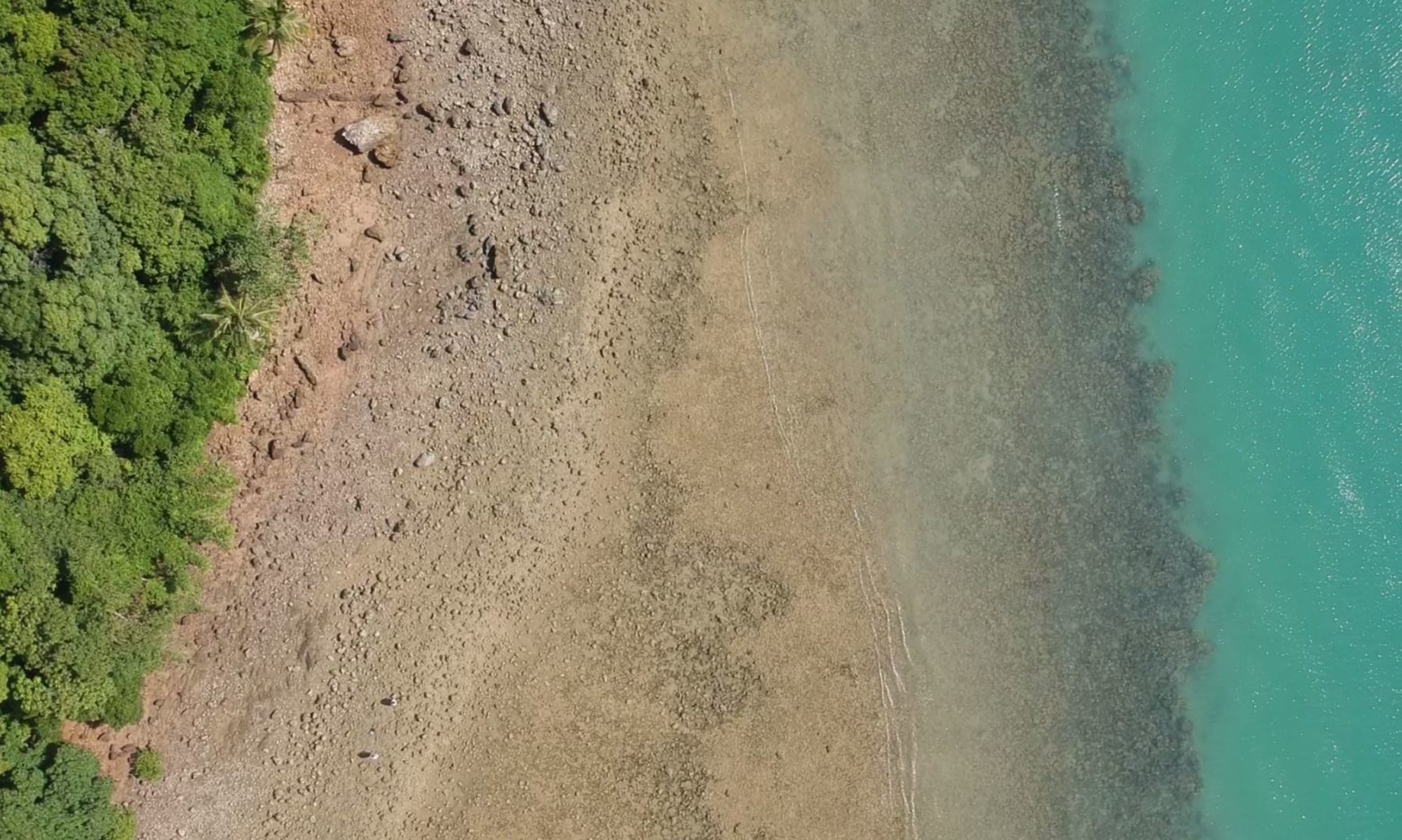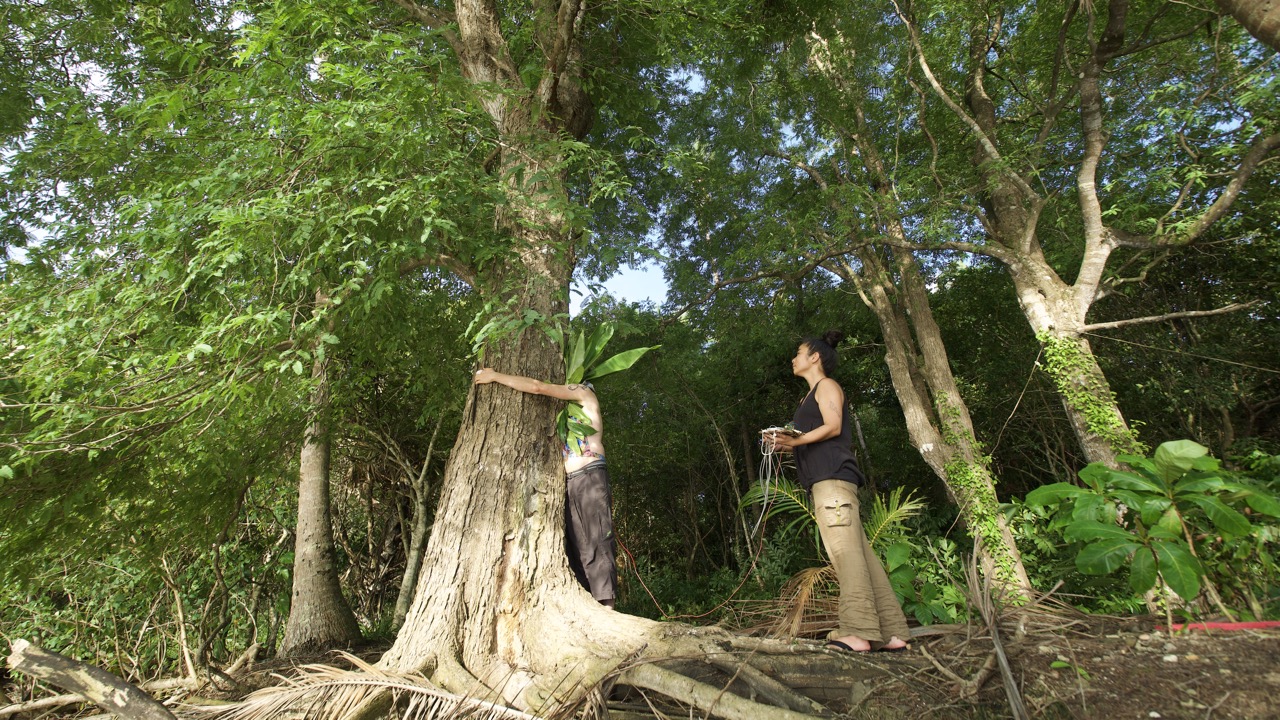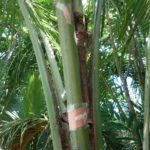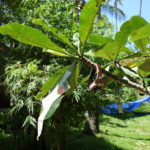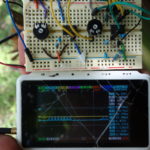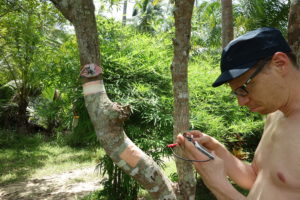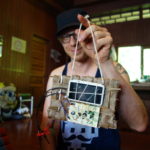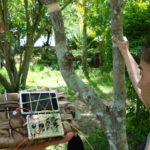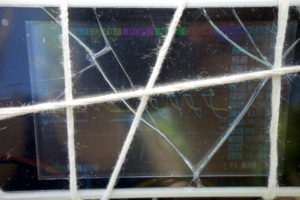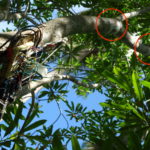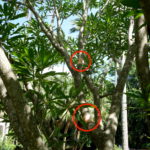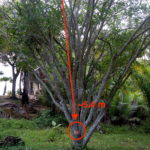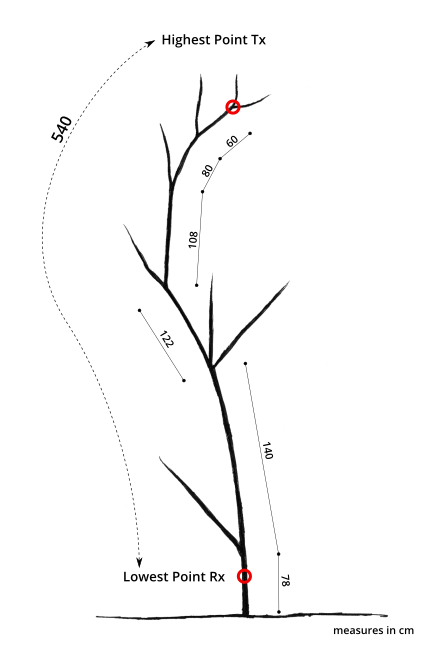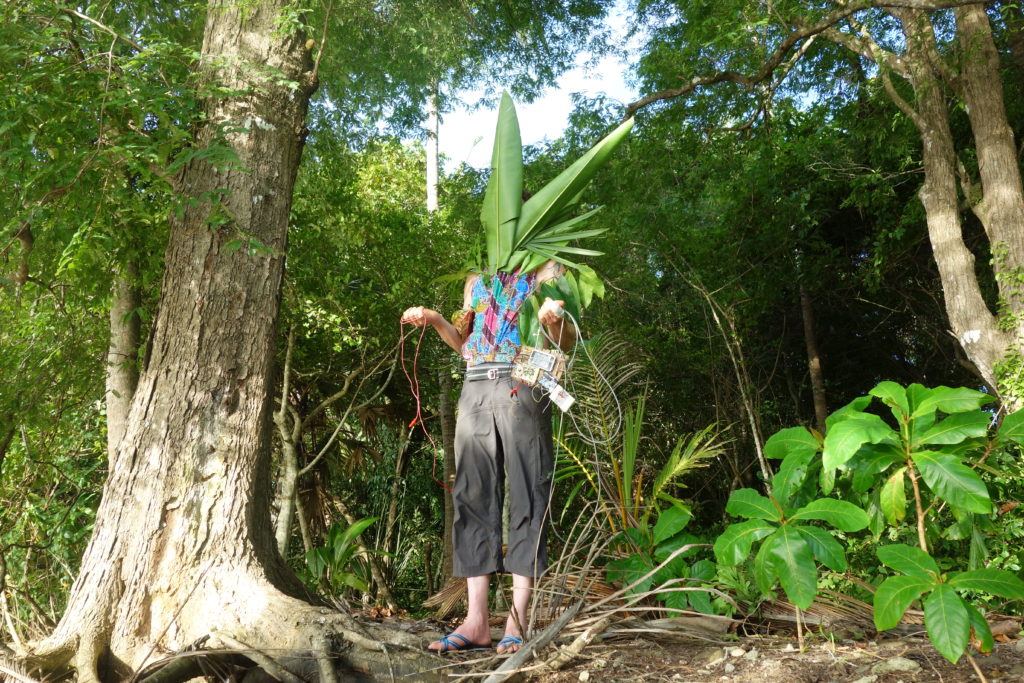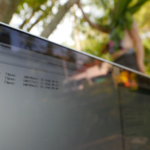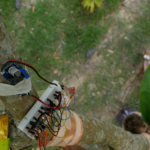A TAN is a Network using plant-infrastructure to transmit data over trees.
(Ingo Randolf)
Introduction – Personal Area Network (PAN)
In his book “When things start to think” (Owl Books – 1999) Neil Gershenfeld writes about how they found a Private Area Network using the body as data-channel: When trying to find a “bug” measuring the hand-position of violinist Ani Kavafian he and Thomas Zimmerman found that human bodies can be used as a data channel using capacitive coupling.
“… the source of our problem was immediately clear: part of Ani’s body was in the [electric-] field and part was out; … Tom [Zimmerman] then realized that we should be able to detect the part of the field that was passing through her body. This creates a tiny current. … In other words, we could transmit data through a body. The bug could become quite a feature.”
There are Wide Area Networks (WANs) to link up cities, and Local Area Networks (LANs) to link up buildings. They have created a Personal Area Network (PAN) to connect parts of a body.
Thomas Guthrie Zimmerman wrote his master thesis (1995) with the title “Personal Area Networks (PAN): Near-Field Intra-Body Communication”: http://www.cba.mit.edu/docs/theses/95.09.zimmerman.pdf
Research in the last years was conducted to use electrostatic communication and waveguides (galvanic coupling) to transmit data through or from within a human body. This research mostly was done in the medical field for applications to monitor the body and send data from internal sensor-data to a base-station outside the body, where data then can be analyzed. This also is called the wet-net or internal-net.
The focus in this research varies from the physical layer to the communication layer, an international standard (IEEE 802.15.6) was developed to standardize the way of communication.
Around 2005 Japanese company NTT developed a product named “RedTacton”, but it is removed from their webpage and it is unclear what happened to it. When looking for consumer or pro-sumer devices in 2017 i could find none. The only way to experiment with humans as data-channel was to build a sender and receiver from scratch.
PAN @ Dinacon: TAN (Tree Area Network)
At dinacon i was interested in experimenting with this devices in the wild to send data over a tree, or in the best case to send data from one tree to another. Is it possible to send data from one side of the jungle to the other? The jungle as a network. I wanted to tackle this questions by starting out using the device on a single tree to see if it is possible at all.
In theory it should be possible to use capacitive coupling on plants. Like a human biological conductor also a plant consists of an internal wet system and an isolating layer on its outside, the bark. The internal system (phloem) is used to transport nutrients and food to and from the roots and consists mainly of water. The phloem also acts as a communication system within the plant; see: “Electrical signals and their physiological significance in plants”, Jörg Fromm & Silke Lautner – Plant, Cell and Environment (2007)
Experiments
The used devices are the same as in the human coupling experiments documented here:
https://ingorandolf.info/building-a-near-field-intra-body-communication-device/
The first experiments were to try if it is possible to detect a simple pattern. The pattern used was a carrier-wave of ~333kHz turned on and off in short pulses of ~200us. This is also the preamble used to establish communication before sending data
Materials used:
– electrodes (sender and receiver): copper plated ripstop – woven textile – Statex, Shieldex® Nora
– sender / receiver: see link above
– amplifier op-amp: from MCP629x family
First experiment:
Setup:
– unmodified PAN sender and receiver on different trees and plants
– 3.4V input to resonant tank, resulting in ~30V peak-to-peak on the transmitter electrode.
– electrodes: sender: 45 x 52 mm, receiver:
Result:
It was possible to pick up the signal a couple of centimeters (~10 cm) away from the transmitter. Different plants worked different well.
On one plant it was only possible to receive the signal on a branch of the same sub-branch, but not on the upper-branch.
Using a steel-needle penetrating the bark as the transmitter electrode, improved transmission. The needles was in the bark for ~1.5 cm. While this showed better results we distanced from such practice as we did not wanted to violate the bark of the tree.
Second experiment:
Setup:
– modified transmitter to send with higher voltages
(12 .. 24 V input, ~80 .. 180 V pp on output)
– modified receiver with a third amplification step (MCP6292)
– same electrode configuration as in the first experiment
Results:
As expected the signal could be picked up better with the stronger signal and the more sensitive receiver. It was possible to receive the signal from ~1m away from the sender on the same branch. The signal did not travel across branches.
Third experiment:
Setup:
– sender with higher voltage: approx. 17V input and ~100 V pp output
– using circular electrodes around the branches for transmitter and receiver electrode.
Result:
Using electrodes around the branched we could picked up the signal unexpectedly well. It seems that encircling the branches with the electrodes perturbs the phloem well enough to send the signal over branching from the top of a tree to it’s stem close to the ground.
Different input voltage ranging from 12 V .. 24 V with a resulting output voltage of ~80 to bigger than ~120V peak-to-peak on the sender resulted in different signals-strength picked up by the receiver. All input-voltage configurations could be picked up.
With this setup it was possible to send sensor-data measured at the top of the tree to the stem close to ground. When the receiving electrode was too close to ground it was not possible to receive the signal anymore. (as deflected to ground?)
The signal passed 5 branchings and covered a distance of around 5,40 meters.
Costuming TAN
Mika Satomi built an interface for TAN enabled tree. This tree-hugging garment is used to receive data from the tree:
https://www.dinacon.org/2018/09/30/costuming-tan/
